Introduction of Ancient Egypt
Ancient Egypt, where towering pyramids rise against the horizon, mysterious hieroglyphics whisper ancient secrets and gods and goddesses walk among mortals. Ancient Egypt was a civilization that thrived along the life-giving Nile River for over 3,000 years. The charm of Egypt's grand temples, the enigma of its pharaohs, and the depth of its mythology have fascinated historians, archaeologists, and adventurers for centuries. Each discovery adds to the awe and wonder, painting a vivid picture of a society that was remarkably advanced and profoundly spiritual. Join us in this article to explore the marvels of ancient Egypt, uncovering the stories, innovations, and enduring legacy of one of history's most captivating civilizations.
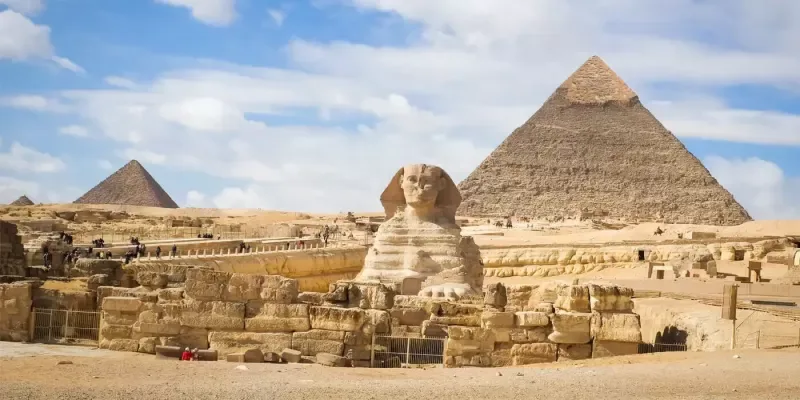
The Birth of a Civilization
Around 3100 BCE, a monumental moment in history unfolded as King Menes unified the lands of Upper and Lower Egypt, marking the dawn of the First Dynasty. This was more than just the start of a new ruling line; it was the birth of one of the greatest civilizations the world has ever known. The heart and lifeblood of ancient Egypt was the mighty Nile River. This river wasn't just a water source; it was a gift from the gods, transforming the arid desert into lush, fertile fields. The Nile's predictable flooding, a natural wonder, provided a bountiful harvest year after year, ensuring that the Egyptians never faced famine.
This agricultural abundance laid the foundation for a society that could afford to dream, innovate, and create. With their basic needs secured, the Egyptians turned their attention to other pursuits. They became master builders, constructing awe-inspiring monuments and tombs. They delved into the mysteries of science, developing advanced techniques in medicine and engineering. They created an intricate writing system that enabled them to record their history, religious beliefs, and daily lives in vivid detail. The predictable rhythm of the Nile's floods allowed for stability and growth, setting the stage for the remarkable achievements of ancient Egyptian civilization.
The Age of the Pyramids
Imagine a time over four millennia ago when the sands of Egypt were teeming with workers and the skyline was dominated by the rising forms of colossal stone structures. This era, known as the Old Kingdom (c. 2686–2181 BCE), is often called the Age of the Pyramids. It was during this remarkable period that ancient Egypt’s most iconic and enduring monuments were erected, structures that continue to awe and inspire to this day.
At the heart of this architectural marvel stands the Great Pyramid of Giza, a colossal testament to human ingenuity and ambition. Commissioned by Pharaoh Khufu, this pyramid was not just a tomb but a symbol of divine power and engineering brilliance. Rising to a height of nearly 500 feet, the Great Pyramid was the tallest man-made structure in the world for over 3,800 years. It consists of approximately 2.3 million limestone blocks, each weighing between 2.5 to 15 tons, meticulously placed with astonishing precision.
Today, The Giza pyramid complex with the Sphinx continues to draw millions of visitors each year, eager to witness the grandeur of these ancient monuments.
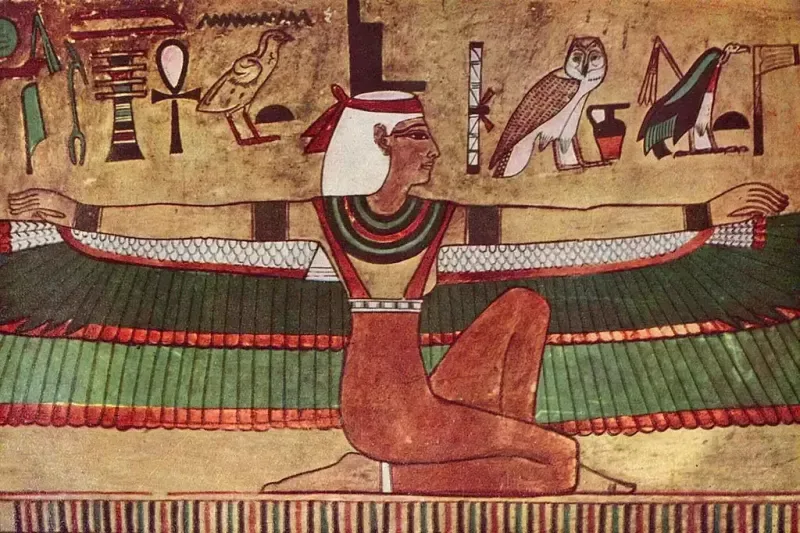
Religion and Mythology of the Ancient Egypt
Religion was integral to every aspect of Egyptian life. The Egyptians believed in a pantheon of gods and goddesses, each with specific roles and attributes. The sun god Ra, the god of the afterlife Osiris, and the goddess of love and beauty Hathor were among the most revered deities. The myth of Osiris, which tells of his murder by his brother Set and subsequent resurrection by his wife Isis, symbolizes the eternal cycle of life, death, and rebirth.
The Pharaohs: God-Kings of Egypt
Imagine a world where rulers were seen as living gods, bridging the divine and human realms. This was the reality in ancient Egypt, where pharaohs wielded unimaginable power and were tasked with upholding ma'at, the cosmic order that ensured harmony and prosperity.
Pharaohs were not merely kings; they were deities on earth, revered and feared by their subjects. Their word was law, their presence, a symbol of divine favor. Among these god-kings, a few stand out for their extraordinary contributions and lasting legacies.
Ramses II often hailed as Ramses the Great, epitomized the might and grandeur of the pharaohs. His reign was marked by military conquests that expanded Egypt's borders and secured its wealth. But Ramses was more than a warrior; he was a master builder, commissioning some of the most magnificent structures ever seen. The temples of Abu Simbel, with their colossal statues carved into the mountainside, remain a testament to his ambition and architectural genius.
Equally remarkable was Hatshepsut, one of the rare female pharaohs who shattered conventions and ruled with unparalleled wisdom and vision. Her reign saw a flourishing of trade, as expeditions brought back riches from distant lands, enhancing Egypt's wealth and prestige. Hatshepsut's legacy is etched in stone at the breathtaking temple of Deir el-Bahri, an architectural marvel that celebrates her achievements and enduring influence.
These pharaohs, and many others, shaped ancient Egypt, leaving behind a legacy that continues to inspire awe and admiration. Through their divine rule, they embodied the very essence of Egyptian civilization, intertwining the mortal and the eternal in a way that still captivates our imagination today.
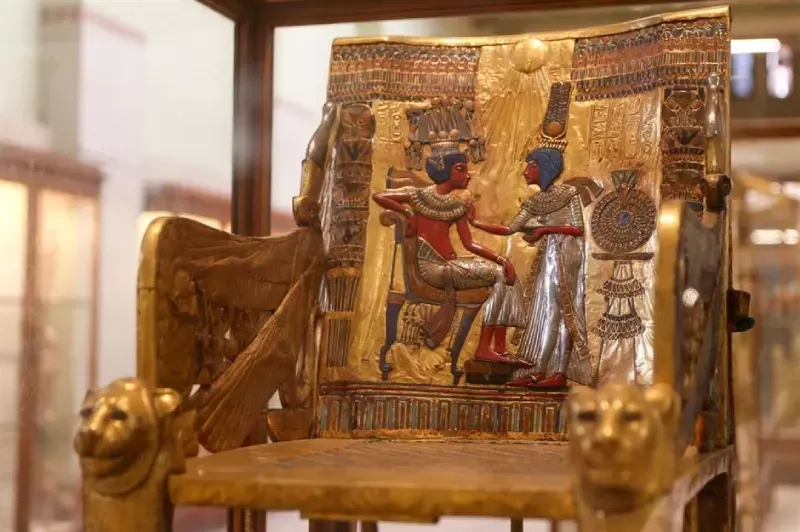
Art and Writing in Ancient Egypt
Egyptian art and writing were highly symbolic and closely linked to religious and cultural beliefs. Hieroglyphics, the writing system of ancient Egypt, combined logographic and alphabetic elements. This intricate script adorned temples, tombs, and monuments, recording everything from historical events to religious texts. The discovery of the Rosetta Stone in 1799 was pivotal in deciphering hieroglyphics, opening a window into the ancient world.
Daily Life in Ancient Egypt
Imagine waking up to the soft glow of dawn filtering through the reeds of your modest, sun-dried brick home along the Nile. As an ancient Egyptian farmer, your day begins with the rhythmic sounds of the river and the promise of fertile lands. Life revolves around the cycles of nature, and your hands are calloused from planting wheat and barley, the staples that sustain your family and your community.
In the bustling markets, the air is thick with the scent of spices and freshly baked bread. Artisans skillfully craft pottery, jewelry, and tools, their fingers dancing with precision and creativity. The clink of metal and the hum of chatter create a symphony of daily life. These craftsmen, though not wealthy, take pride in their work, knowing that their creations play a vital role in society.
Contrast this with the lives of the elite, where opulence and grandeur define existence. As a scribe or a noble, you dwell in a sprawling estate, adorned with vibrant murals and lush gardens. Your garments are woven from the finest linen, and you are educated in the art of writing and administration. Education is a privilege, opening doors to positions of influence and power.
Priests, who mediate between the gods and the people, wear elaborate robes and conduct intricate rituals within the towering temples. They hold sway over spiritual matters, ensuring that the gods are appeased and cosmic balance, or ma'at, is maintained. The nobility enjoys feasts laden with figs, dates, and wine, their social gatherings echoing with laughter and music played on harps and flutes.
Yet, whether humble farmers or high-ranking officials, Egyptians share a common thread: a profound reverence for family, community, and the afterlife. Life's journey is but a prelude to an eternal existence. Elaborate burial practices, including mummification and the construction of tombs filled with treasures, reflect the belief that one's deeds in this world directly influence one's fate in the next. Every action is weighed against the feather of Ma'at, the goddess of truth and justice, determining a soul's worthiness for an eternal paradise.
In ancient Egypt, daily life is a tapestry woven with threads of hard work, devotion, and an unwavering connection to the divine. Each day is a blend of the earthly and the celestial, a dance between survival and spirituality, grounding this civilization in a legacy that continues to enchant and inspire.
The New Kingdom: An Era of Expansion
The New Kingdom (c. 1550–1070 BCE) marked a period of prosperity and territorial expansion. Pharaohs like Thutmose III and Ramses II led military campaigns that extended Egypt's influence into Nubia, the Levant, and beyond. This era also saw the construction of the Valley of the Kings, where many pharaohs were buried in elaborate tombs filled with treasures and inscriptions meant to guide them in the afterlife.
Read Also: The Ancient Egypt Dynasty
The Decline and Legacy of Ancient Egypt
Despite its grandeur, ancient Egypt faced periods of decline due to internal strife, invasions, and environmental changes. The conquest by Alexander the Great in 332 BCE and the subsequent rule of the Ptolemaic dynasty marked the end of native Egyptian rule. However, the legacy of ancient Egypt endures through its monumental architecture, art, and contributions to human knowledge.
Conclusion
Ancient Egypt remains a source of fascination and wonder. Its achievements in architecture, writing, and governance continue to inspire modern society. The civilization's ability to harmonize the earthly and the divine, the mundane and the monumental, offers timeless lessons about human potential and creativity. As we continue to uncover the secrets of ancient Egypt, we gain not only historical insights but also a deeper appreciation for the enduring legacy of one of the world's greatest civilizations.
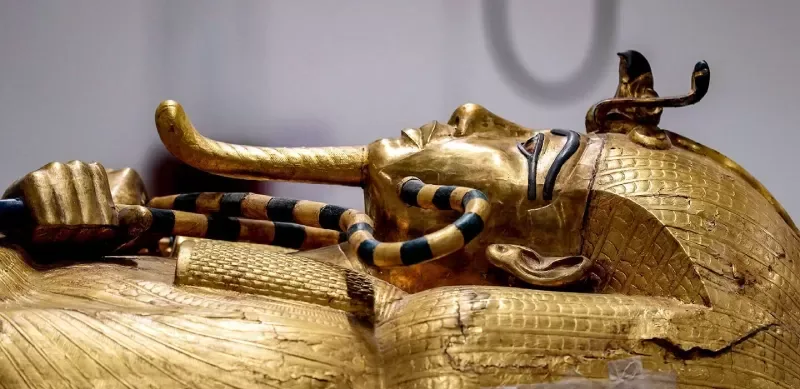
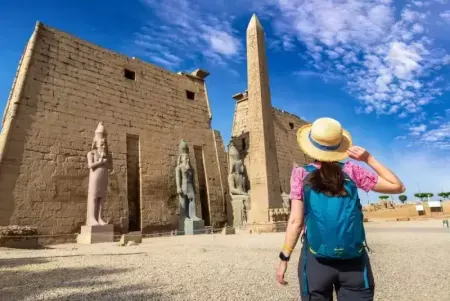
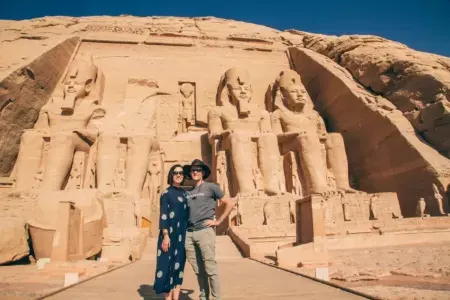






.jpg)

.jpg)
.jpg)









